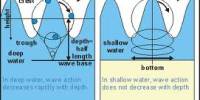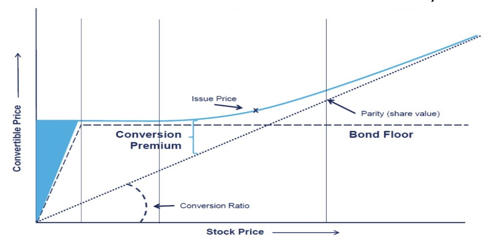Adrian Bejan, a professor of engineering at Duke University, has proven a number of natural phenomena since 1996 that support his constructal hypothesis. The theory essentially holds that all flow systems animate and inanimate evolve to make it easier to access what flowing.
Whether the phenomenon is the root systems of trees, the effluent branches of river deltas, or the bronchial tubes that carry oxygen to the lungs, this type of flow often takes the form of a few big conduits attached to many smaller vessels.
He’s even gone as far as to show its manifestation in the hierarchical nature of extraterrestrial objects, wealth distribution throughout a society and the evolution of the world’s animal kingdom.
But within the past couple of years, two papers caught Bejan’s attention that seemed to contradict the theory, at least on the surface, and made him curious.
One from CalTech investigated a phenomenon that Bejan witnessed himself on a regular basis just outside of his driveway. Water doesn’t form a single, uniform channel when it flows down an inclined surface that can erode away; instead, it forms a sequence of cascading pools that appear to impede rather than facilitate the flow.
In the other paper, researchers from Cambridge investigated the nature of hydraulic jumps, which anyone with a flat sink has seen firsthand. A stream of water expands out into a smooth disk when it encounters a sizable, flat surface before abruptly giving way to a thicker, turbulent runoff.
The best physics can be proven with simple physics. At first glance, these systems would seem to be impeding the system’s flow. But it’s not speed that’s important, it’s momentum transfer. These examples go to show how important it is for researchers to question observations and consensus.
Professor Adrian Bejan
Long thought to be generated by gravity, the Cambridge researchers demonstrated that it is completely the result of surface tension and viscous forces balancing the momentum in the liquid film.
These two papers made Bejan consider a third potential contradiction a thin sheet of water running down an inclined hard surface. Anyone observing rain flow down a driveway or sidewalk will notice that the water creates a series of ridges that cross the direction of the flow. The flow appears to be hampered by these lines, which are heavy accumulations of turbulence and rolling water waves.
With these three seeming contradictions in mind, Bejan put the constructal law to the test by exploring a series of simple physics models. As the results published the ASME Open Journal of Engineering show, despite appearances to the contrary, these phenomena improve the flow, as the constructral law predicts.
“These papers exploring phenomena that I see at home on a regular basis made me question the theory,” said Bejan, the J.A. Jones Distinguished Professor of Mechanical Engineering at Duke. “But when I sat down and ran through the equations, I realized these effects are their own animal.”
Water moves with more momentum in a turbulent freefall than it does flowing smoothly over a surface, which essentially solves the apparent contradiction in all three systems.
Bejan discovered that, for the sink-based hydraulic jumps, a larger, turbulent layer actually boosts the flow of momentum across the fluid layer, despite the fact that a smooth disk of water may appear to be more effective. The hydraulic jump is a visual display of the transition to turbulent flow, and that turbulence, according to Bejan, is predictable and no longer a mystery.
Bejan then puts together a long list of features of turbulent flow predicted by invoking the constructal law.
In the case of the hard inclined surface, Bejan draws a diagram and explores the forces at work, including friction working against the water as it flows. He discovered that roll waves are self-made “cliffs” that provide the water the freedom to roll over and fall freely for a brief distance, increasing the water’s momentum and consequently its overall flow rate.
The sequence of cascading ponds were created by a similar mechanism because water flows more effectively over a dam than it does when it slides down an incline. A series of dams will topple if water flows over an erodible surface.
The design of pumped storage hydropower plants, in which water is kept in a sizable reservoir and then released to pass through a turbine before arriving at a second reservoir at a lower elevation, shares this same concept. As a result of the higher flow rate, the water in these systems moves vertically rather than slope.
“The best physics can be proven with simple physics,” Bejan said. “At first glance, these systems would seem to be impeding the system’s flow. But it’s not speed that’s important, it’s momentum transfer. These examples go to show how important it is for researchers to question observations and consensus.”
















